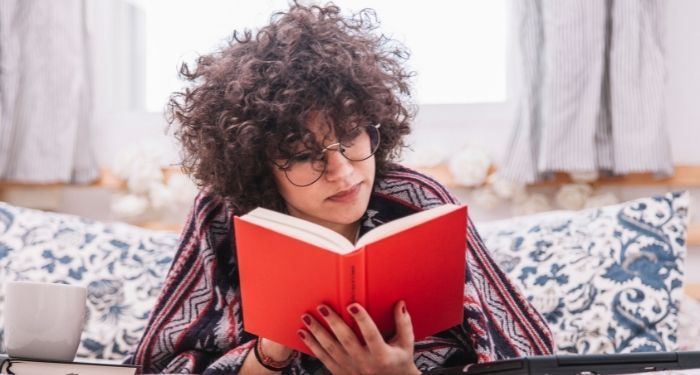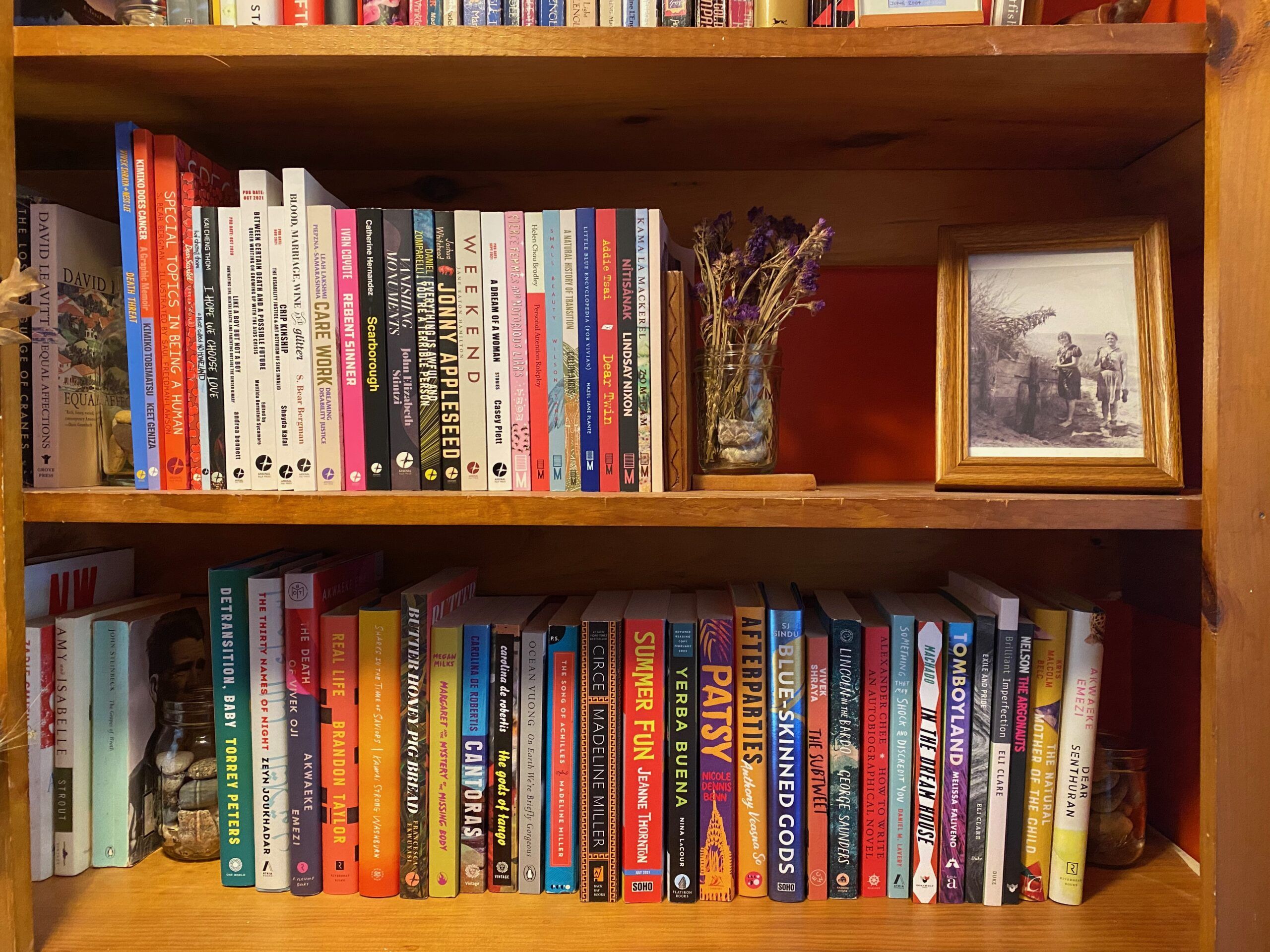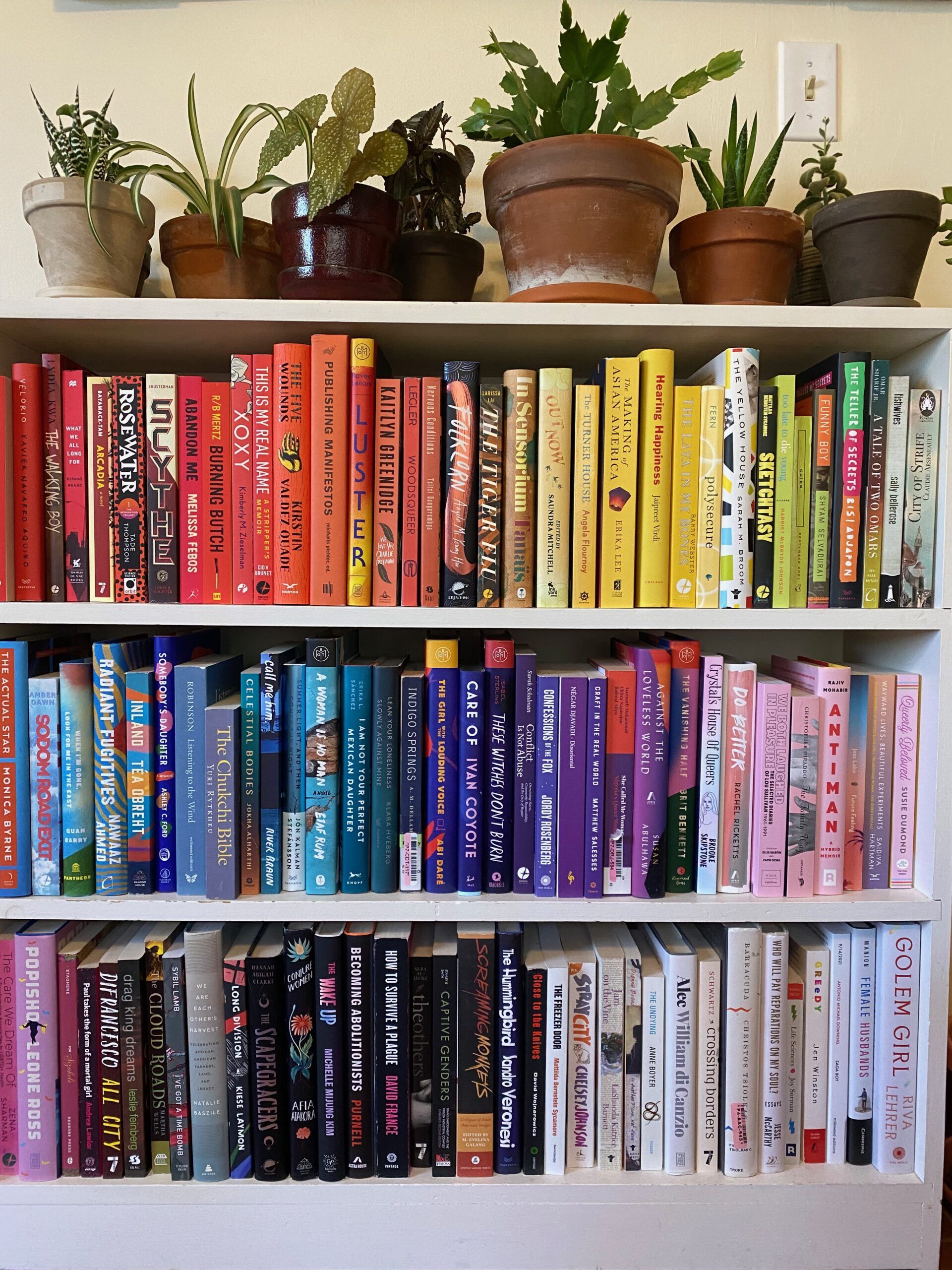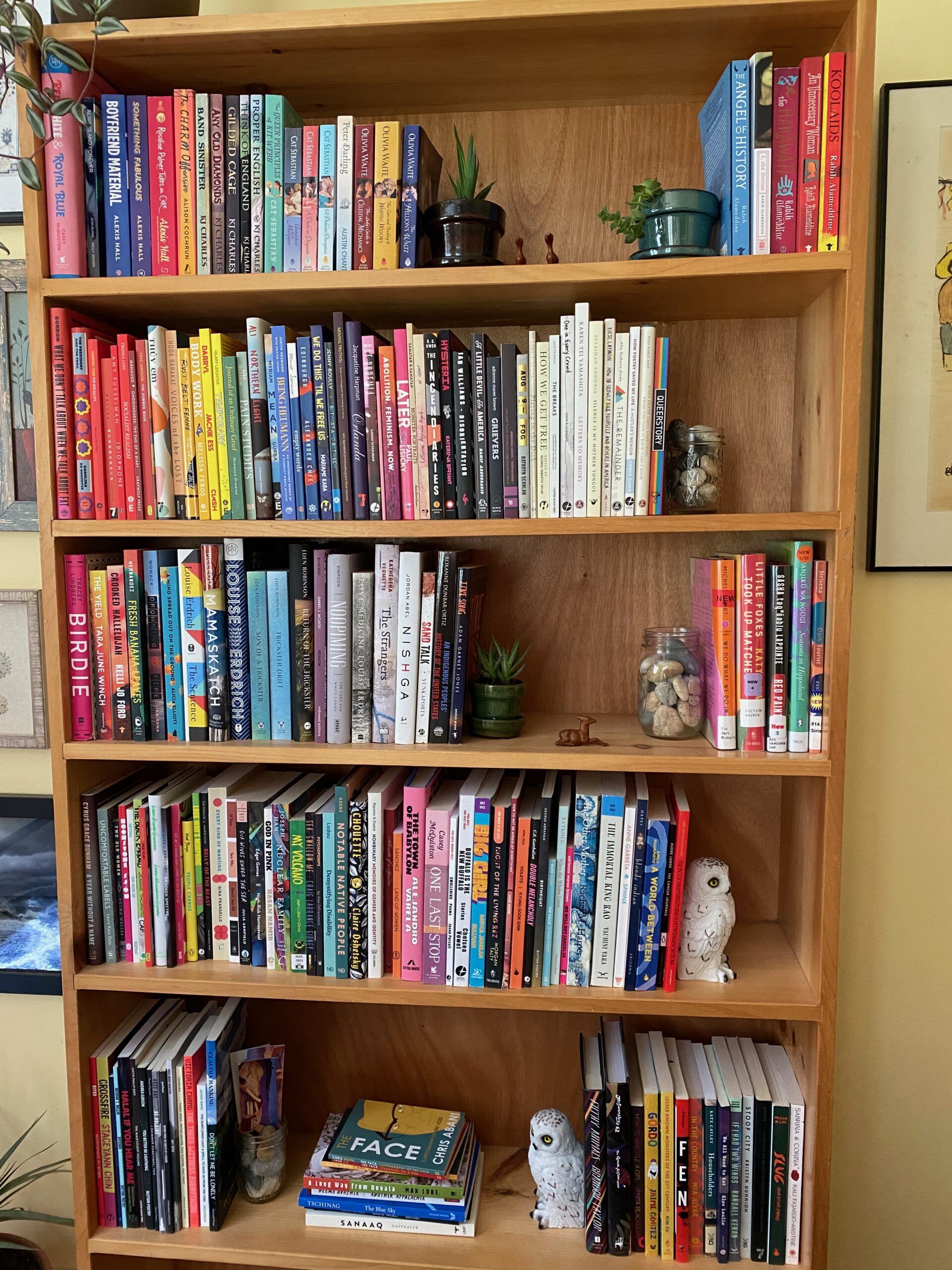
On Having Bookshelves That Reflect Who I Am
Raise your hand if you’ve ever said or heard something like this: “I have so many unread books at home and it’s so stressful! My TBR pile is out of control! When am I ever going to read all the books on my shelves?”
It’s a common refrain among book lovers. Though I, too, have always owned a considerable amount of books, this sentiment is one I didn’t understand until recently. When I used to hear people talking about how badly they wanted to make a dent in their physical TBRs, or how overwhelming it was to own so many books they hadn’t yet read, I’d scratch my head, confused. I figured I’d get to the books on my shelves eventually. Wasn’t that the point of owning books? To know you could read them whenever, now or 10 years from now? For a long time, it didn’t even occur to me to look at my own bookshelves when I wanted a new read. I’d turn to my digital TBR and the library. My books were just background noise.
Most of the books I collected in my teens and twenties were books I happened upon. For over a decade, I lugged boxes and boxes of books from apartment to apartment, unpacking them and reshelving them in each new place. A lot of them were classics I’d picked up in high school at library book sales. Others were dusty old books I’d snuck from the shelves of my childhood house. They were the kinds of books I thought I should read — books that seemed smart and worldly and important. Hemingway and Philip Roth and Henry James. Very few of them were queer.
I did occasionally buy a book because it spoke to me or because I’d read it and loved it. But I also bought books because I thought I should own them. One summer I bought Dover Thrift editions of all of Shakespeare’s plays. I have enjoyed reading Shakespeare throughout my life. But I never stopped to consider whether I actually wanted to own those books. I just decided it was something a Book Person would do.
I kept haphazardly collecting books and rarely got rid of any, because I like the way bookshelves look. Meanwhile, I kept reading. By the time I turned 30, my reading life had become unrecognizable — in the best possible way. I started reading more and more and more and more queer books. I found my way to bookish communities online, and those communities led me to new books, new indie presses, new genres. I was ravenous for all of this new lit. For the first time since I was a kid, I was reading books that spoke to me and challenged me and delighted me. I was reading for me — not for some dusty, narrow-minded idea of who I thought I should be — but for me: queer, weird, curious, constantly changing me.
Slowly, my new reading life spilled onto my shelves. How to Write an Autobiographical Novel by Alexander Chee popped up next to an old collection of essays by George Orwell. YA novels by Anna-Marie McLemore and Elizabeth Acevedo peeked out from between my battered copies of Phillip Pullman. N.K. Jemisin appeared next to Asimov. I bought Ocean Voung’s Night Sky with Exit Wounds and Danez Smith’s Don’t Call Us Dead, which I slipped onto my poetry shelf next to Wordsworth and Plath. Looking at these books filled me with a kind of happiness I’d never experienced before. These weren’t just books I’d paid a dollar for because why not? These were books I had chosen. Hmm, I thought. This is new.
Then, in 2020, I experienced a radical, bookshelf-shattering shift. I bought a few books at the beginning of the pandemic because I wanted to support some of my favorite independent bookstores. Then I moved, and to celebrate, I placed a big order with my new local indie. A few of my favorite indie presses had sales. I bought some books. I went to a bookstore in person for the fist time in 18 months and left with a stack of books I could not wait to read. Suddenly I was buying queer books by the stack, and when I brought them home and put them on my shelves, I felt a deep and profound joy. For the first time, I understood what all the fuss was about, why people made book-buying budgets and went on self-imposed book buying bans. I’d never bothered to buy books with this kind of intention before. I’d never bought books that I was so ravenous to read.
During my most recent move, I got rid of hundreds of books. I filled box after box of books I had no interest in reading. Every house I’ve ever lived in as an adult has been filled with books I don’t care about. Ditching them was profoundly freeing. And into all that glorious new shelf space, I stuffed books that make my heart beat faster.
I created a shelf devoted to books from two of my all-time favorite presses: Arsenal Pulp and Metonymy. Below it, I made a shelf for my all-time favorites. These two shelves represent so much queer brilliance. Sometimes I get shivers when I walk by it.

Slowly, over the past two years, I’ve filled up an entire shelf with unread books, and while I don’t feel stressed out when I look at it, I do feel a sense of pleasant urgency. I cannot wait to read these books. Sometimes I run my hands along their spines, anticipating all the stories and ideas to come. When I’m looking for a new book, it’s my first stop.

My favorite bookshelf, though, is the one in my bedroom. It’s a snapshot of everything I love about my reading life. There’s a section of beloved queer romance and a stack of library books. It contains all my unread books under 200 pages, a shelf of books by Indigenous authors I can’t wait to read, a favorite author’s entire backlist, and a bunch of poetry collections I’m saving for The Sealey Challenge in August. It’s where I put books I own when I finish reading them, and so one of its shelves has become a visual log of books I’ve read and loved this year. When I look at this shelf, I see myself.

I’ve always loved owning books for the sheer joy of looking at full bookshelves, and that hasn’t changed. But while the books I owned used to be a static decoration, they’ve now become something vibrant and alive. They’re overwhelmingly queer. They’re mostly written by women. I turn to them when I have questions, when I’m looking for a challenge, when I need comfort. For the fist time in my life, my bookshelves reflect who I am and who I want to be.
I still have my beloved childhood copy of Lord of the Rings and my dogeared Collected Poems of Robert Frost. I did not get rid of the heavily-annotated copy of A Portrait of the Artist of a Young Man I read when I was 16. I kept the pieces of my history that matter to me, and discarded the rest. My bookshelves are a complicated patchwork of past loves and future dreams, lessons learned and learning to come, queer joy and radical philosophy. Like me, they are a work in progress. But if you walk into my house knowing nothing about me — my books will tell you who I am.

















